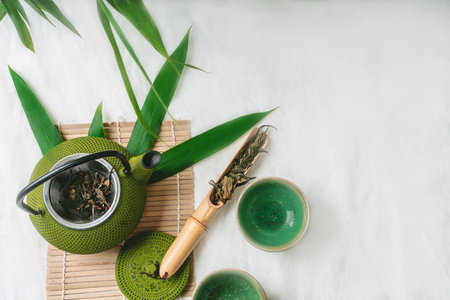1. Understanding the Five Elements in a Modern Context
The Five Elements—Wood, Fire, Earth, Metal, and Water—are ancient concepts rooted in Chinese philosophy and feng shui. While their origins date back thousands of years, these elements can still provide meaningful guidance for personal growth and self-care in today’s fast-paced American lifestyle.
What Are the Five Elements?
Each element represents certain qualities and energies that can be observed both in nature and within ourselves. Here’s a simple breakdown:
| Element | Key Qualities | Modern Symbolism |
|---|---|---|
| Wood | Growth, flexibility, new beginnings | Personal development, creativity |
| Fire | Passion, transformation, energy | Motivation, enthusiasm |
| Earth | Stability, nourishment, grounding | Work-life balance, self-care routines |
| Metal | Structure, clarity, precision | Organization, focus |
| Water | Flow, adaptability, wisdom | Mental health, emotional awareness |
The Five Elements in Everyday Life
You might not notice it, but these elements are already present in many aspects of modern American culture. For example:
- Wood: Setting personal goals or starting a new hobby.
- Fire: Celebrating achievements or expressing your unique style.
- Earth: Practicing mindfulness or enjoying a home-cooked meal with family.
- Metal: Decluttering your space or setting clear boundaries at work.
- Water: Taking time for reflection or going with the flow during changes.
Why Adapt the Five Elements?
The beauty of the Five Elements is their adaptability. By understanding their basic principles, you can apply them to create more harmony and balance in your daily routine—whether that means boosting creativity (Wood), managing stress (Earth), or staying motivated (Fire).
2. Identifying Your Elemental Strengths and Imbalances
Discovering Your Dominant Elements
The Five Elements—Wood, Fire, Earth, Metal, and Water—each represent different energies in our lives. In Feng Shui and holistic wellness, understanding which elements are most present or missing can help you design self-care rituals that truly support your personal growth. Recognizing your elemental strengths and imbalances doesn’t require deep esoteric knowledge; it starts with simple self-awareness and honest reflection.
Simple Self-Assessment Techniques
You can begin by noticing patterns in your emotions, habits, and preferences. For example, do you feel energized by new challenges (Wood), crave excitement (Fire), love comfort and stability (Earth), value organization (Metal), or seek peace and introspection (Water)? These tendencies can reveal which elements are naturally strong in your life, as well as those you might need to nurture.
Elemental Traits at a Glance
| Element | Key Traits | Signs of Strength | Signs of Imbalance |
|---|---|---|---|
| Wood | Growth, ambition, flexibility | Motivated, creative, adaptable | Irritability, restlessness, impatience |
| Fire | Passion, enthusiasm, warmth | Charismatic, joyful, energetic | Anxiety, impulsiveness, burnout |
| Earth | Stability, nurturing, support | Caring, dependable, grounded | Worry, stubbornness, over-caretaking |
| Metal | Order, clarity, precision | Organized, disciplined, discerning | Criticism, rigidity, isolation |
| Water | Calmness, intuition, reflection | Insightful, peaceful, imaginative | Lethargy, fearfulness, withdrawal |
A Quick Self-Reflection Exercise
Take a few minutes to jot down answers to these questions:
- Which element’s strengths do I notice most in my daily life?
- Where do I often feel stuck or out of balance?
- If I could invite more of one element into my routine for better well-being, which would it be?
Your answers can serve as a starting point for exploring personalized self-care rituals. By tuning into your unique elemental makeup—what’s abundant and what’s lacking—you’ll be better equipped to choose practices that create harmony in both your inner world and your everyday environment.

3. Incorporating the Elements into Everyday Self-Care
Integrating the Five Elements—Wood, Fire, Earth, Metal, and Water—into your daily self-care rituals can help you achieve balance and a deeper sense of well-being. Each element represents specific qualities and energies that can be harnessed through mindful activities, exercise, and even how you set up your home. Let’s explore practical ways to align your self-care habits with the energy of each element in a way that fits everyday American life.
Understanding the Five Elements in Self-Care
The Five Elements come from traditional Eastern philosophy but can be adapted to modern lifestyles. Here’s what each element stands for:
| Element | Key Qualities | Self-Care Focus |
|---|---|---|
| Wood | Growth, flexibility, new beginnings | Setting goals, personal development, stretching exercises |
| Fire | Passion, joy, energy | Socializing, dancing, creative projects |
| Earth | Nurturing, stability, grounding | Meditation, cooking healthy meals, gardening |
| Metal | Clarity, organization, reflection | Decluttering spaces, journaling, deep breathing exercises |
| Water | Calmness, flow, renewal | Taking baths, listening to soothing music, spending time near water |
Practical Ways to Align Your Self-Care Rituals with the Elements
Mindfulness Practices for Each Element
- Wood: Try morning affirmations or vision boarding to encourage growth and fresh starts.
- Fire: Practice gratitude journaling or group meditation sessions to spark joy and connection.
- Earth: Do grounding exercises like walking barefoot on grass or mindful eating.
- Metal: Set aside time for daily reflection or organize your workspace to invite clarity.
- Water: Enjoy guided meditations focused on relaxation or spend quiet moments by a lake or fountain.
Exercise Ideas Inspired by the Five Elements
- Wood: Take up yoga or tai chi to build flexibility and foster growth.
- Fire: Join a dance class or cardio workout that energizes you.
- Earth: Go hiking or do light gardening to feel more connected to nature.
- Metal: Try pilates or structured workouts that emphasize form and precision.
- Water: Swim laps at a local pool or practice gentle stretching at home.
Create an Elemental Home Environment
- Add Wood energy: Decorate with houseplants and use green tones to encourage vitality.
- Spark Fire energy: Use warm lighting or display art that makes you smile.
- Cultivate Earth energy: Incorporate soft textures and earth-tone colors for comfort and stability.
- Evoke Metal energy: Keep areas tidy with minimalistic décor in whites and grays.
- Bathe in Water energy: Add water features like small fountains or use calming blue accents.
Your Personalized Five Elements Routine
You don’t have to use all five elements every day. Choose one or two that resonate most with your current needs. For example: if you’re feeling scattered, focus on Earth and Metal activities; if you need motivation, bring in more Wood and Fire elements. Over time, tuning into these energies will help you create a holistic self-care routine that supports both your body and mind.
4. Applying Elemental Wisdom to Relationships and Community
The Five Elements—Wood, Fire, Earth, Metal, and Water—offer a timeless framework for nurturing healthier relationships and building supportive communities. By understanding how each element influences our interactions, we can bring more harmony and balance into our personal and professional lives.
Understanding the Elements in Social Settings
Each element represents qualities that show up in how we connect with others. Here’s a quick look at how you might notice these energies in your daily life:
| Element | Key Qualities | How It Shows Up in Relationships |
|---|---|---|
| Wood | Growth, Initiative | Encourages honest communication and teamwork, helps resolve conflicts constructively |
| Fire | Joy, Passion | Sparks enthusiasm, deepens connections, inspires creative collaboration |
| Earth | Stability, Support | Nurtures trust, offers emotional support, builds dependable bonds |
| Metal | Clarity, Respect | Promotes healthy boundaries, encourages fairness and gratitude |
| Water | Adaptability, Wisdom | Enhances empathy, allows for open-mindedness, supports deep listening |
Using Elemental Energy to Strengthen Connections
Nurturing Personal Relationships
- If you want to encourage openness and growth in your family or friendships (Wood), try starting new traditions or having regular check-ins.
- Add warmth (Fire) by celebrating small wins together or simply sharing laughter over dinner.
Cultivating Balance at Work or in the Community
- Create stability (Earth) by supporting colleagues during stressful times and recognizing everyone’s efforts.
- Maintain clarity (Metal) by setting clear expectations and appreciating diverse perspectives in meetings or group projects.
Fostering Empathy and Flexibility (Water)
When disagreements arise, tap into Water energy: practice active listening and be willing to adapt your approach. This creates space for understanding even when opinions differ.
Tips for Bringing the Five Elements into Your Interactions
- Observe which element feels missing or overpowering in a relationship. Adjust your own actions to restore balance.
- Create environments—at home or work—that reflect all five elements through colors, textures, or shared rituals.
The wisdom of the Five Elements isn’t just about personal growth—it’s also a practical guide for connecting with others and building stronger communities wherever you are.
5. Personalizing Rituals for Sustainable Growth
The Five Elements—Wood, Fire, Earth, Metal, and Water—offer a flexible framework to help you create self-care rituals that truly fit your life. When these elements are adapted to your personality and needs, they become powerful tools for ongoing growth and balance. Let’s explore how you can personalize rituals based on the Five Elements and keep them fresh as you evolve.
Understanding Your Unique Elemental Balance
Start by reflecting on which elements resonate with you right now. Maybe you feel drawn to Water when you’re seeking calm, or you need more Fire energy for motivation. Here’s a simple way to match common needs with elemental focus:
| Need | Element | Example Ritual |
|---|---|---|
| Clarity & Focus | Metal | Morning journaling or decluttering your workspace |
| Energy & Motivation | Fire | Dancing to upbeat music or lighting a scented candle |
| Stability & Grounding | Earth | Meditating outdoors or practicing gratitude |
| Growth & Creativity | Wood | Setting new goals or spending time in nature |
| Calm & Reflection | Water | Taking relaxing baths or deep breathing exercises |
Customizing Rituals for Your Lifestyle
Your rituals should fit easily into your daily routine. If mornings are rushed, choose something simple like a 2-minute gratitude practice (Earth) before breakfast. If evenings are quiet, try reflective journaling (Water) or listening to soothing music.
Tips for Making Rituals Sustainable:
- Start small: Pick one element and one short ritual to begin with.
- Mix it up: Rotate rituals from different elements each week.
- Check in with yourself: Adjust your practices as your needs change.
- Add personal touches: Use scents, colors, or objects that feel meaningful to you.
- Share with others: Invite friends or family to join in group rituals for added support.
Evolving Your Self-Care Over Time
Your needs will shift as life changes. The Five Elements framework is designed to grow with you. For example, during stressful times, focus more on Earth and Water rituals for grounding and calm. When you’re ready for new challenges, bring in Wood and Fire activities for momentum and creativity.
Quick Reference: Matching Life Phases to Elements
| Life Phase/Challenge | Main Element(s) |
|---|---|
| New Beginnings (starting a job, moving) | Wood & Fire |
| Bouncing Back from Burnout | Earth & Water |
| Pursuing Big Goals | Fire & Metal |
| Navigating Change/Loss | Water & Earth |
| Cultivating Routine Stability | Earth & Metal |
The beauty of using the Five Elements is that your self-care becomes as unique as you are—flexible, meaningful, and supportive no matter where you are on your journey.


